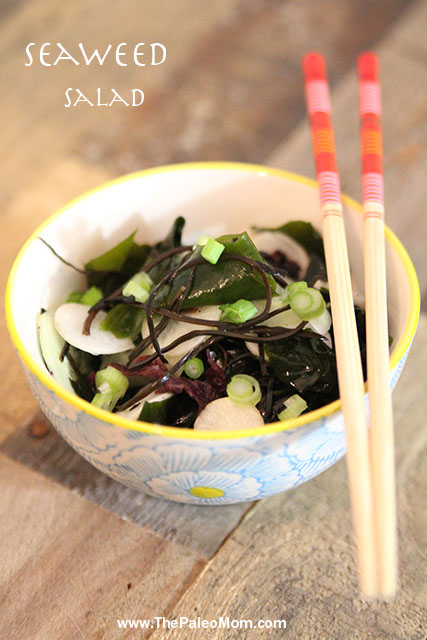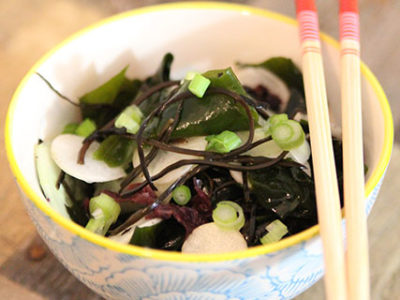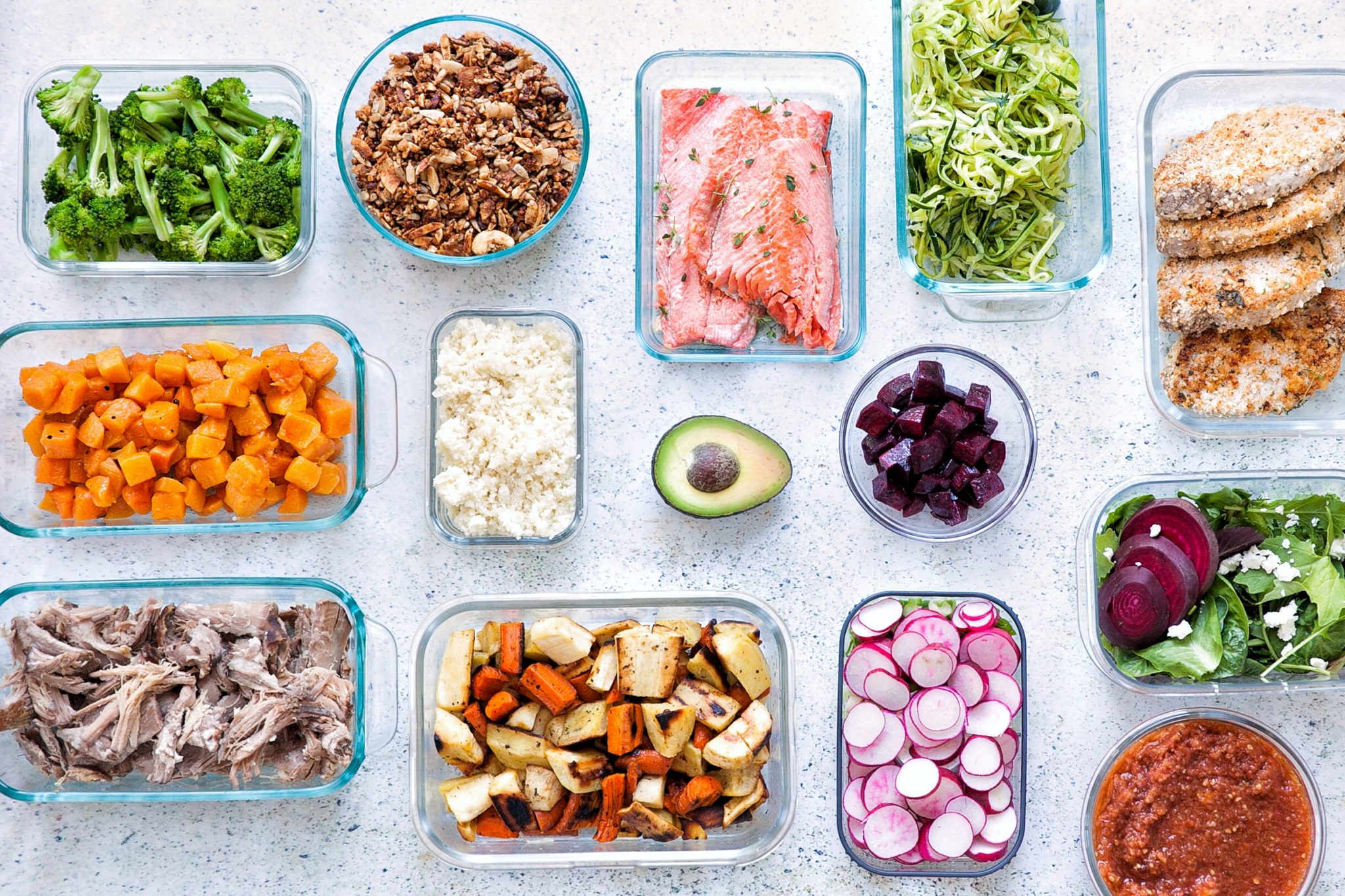Seaweed may be the most nutrient-dense vegetable out there. They are very high in essential minerals, including iodine, calcium, iron, copper, magnesium, manganese, molybdenum, phosphorus, potassium, selenium, vanadium, and zinc (in addition to about four dozen more trace minerals known to be essential for health!). They are high in carotenoids (antioxidants that are also precursers to Vitamin A), vitamin C, vitamin E, vitamin K and vitamins B1, B2, B3, B5 and B6. They are also one of the few plant sources of long-chain omega-3 fats (DHA, algae being the plant sources). Seaweed intake has been shown to reduce cancer risk, reduce inflammation, reduce cardiovascular disease risk, promote overall vascular health, and seaweed even has some antiviral properties! Yep, that’s some pretty great stuff. But, how do you eat it?!?!
In The Paleo Approach, I recommend eating sea vegetables at least once per week. And, there’s lots of sneaky ways to do this, such as adding it to soups, or switching to a salt enriched with sea vegetables. But, seaweed is tasty stuff. Just because we’re not familiar with it doesn’t mean we need to run for the hills and jump straight to “I can eat it as long as I hide it from myself” mode. And my favorite way to eat seaweed? Seaweed salad!
Most traditional seaweed salad recipes rely heavily on soy sauce (traditional soy sauce contains gluten, plus soy itself is definitely not considered Paleo!) and sesame oil for flavor. And, because I wanted to create a flavorful and accessible seaweed salad recipe that was also Autoimmune Protocol-friendly, that put these two ubiquitous ingredients out of reach. But, I still wanted to embrace the traditional Asian flavors since, to me, that’s what seaweed salad is!
After much tinkering, I landed on an amazing combination. This salad is very quick to prepare and is extremely tasty. I recommend enjoying with other Asian-inspired flavors (maybe my Coconut Oil-Poached Whitefish with Asian Pear Slaw, Asian-Inspired Chicken Wings, Meatballs with Asian Dipping Sauce, Har Gow-Inspired Shrimp Balls, Ginger-Garlic Cauliflower Rice, or Teriyaki-Inspired Poached Salmon). It keeps well in the fridge for a couple of days, so feel free to enjoy the leftovers too!
If you aren’t following the autoimmune protocol, feel free to add a half teaspoon of sesame oil and garnish this salad with sesame seeds.
Prep Time: 10-15 minutes
Cook Time: None
Serves: 8

Ingredients:
- 1/4 cup fresh lemon juice
- 2 tablespoons coconut water vinegar
- 4 teaspoons fish sauce
- 2 teaspoons honey
- 1 teaspoon fresh ginger juice (see Tip)
- 2 ounces dried seaweed (such as wakame, arame, dulse, agar, or a mix)
- 2 cups finely sliced cucumber (peel if peel is tough), about 1 medium cucumber
- 2 cups finely sliced Japanese turnip or daikon radish (about 8 ounces)
- 2 green onions, finely chopped
Directions:
1. Combine the lemon juice, coconut water vinegar, fish sauce, honey, and ginger juice.
2. Soak the seaweed in cold water for 5 minutes (taste it and if it’s still quite tough, soak an additional 2-5 minutes, tasting again every minute or two).
3. Rinse and drain (if you have any very large pieces of seaweed, feel free to give them a rough chop). Combine the rehydrated seaweed, cucumber, turnip and dressing. Garnish with green onions.
Tip:
To make fresh ginger juice, finely grate fresh ginger with a microplane or box grater and then squeeze the grated ginger with your fingers over a measuring spoon or cup to catch the juice. A thumb’s length of fresh ginger should be more than enough for the required 1 teaspoon of ginger juice.



 What The Heck Does Our Liver Do Anyway? Detoxification Explained
What The Heck Does Our Liver Do Anyway? Detoxification Explained